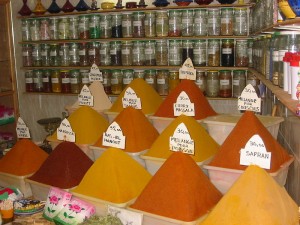
Montessori elementary programs approach history from the perspective of the basic needs of human beings. They look at how humans have satisfied the needs for food, shelter, spirituality and so on over time.
A new book by Tom Standage called, “An Edible History of Humanity” looks at human history through food, from how agriculture lead to the beginning of civilization, to the role of spices in the European discovery of the Americas, to how food production shaped the rise and fall of Napoleon, to the effects of the Green Revolution on the world today.
it concentrates specifically on the intersections between food history and world history, to ask a simple question: which foods have done most to shape the modern world, and how?
Spiked Online has a nice review of the book that touches on many of the key points. This book certainly open up a wider discussion of world history. A simplified version would likely be a great addition to the middle school curriculum.
The vivid colors, heart-rending smells and sheer mass of the pyramids of spices in Moroccan markets are a vivid reminder of the importance of the Arab spice trade. The spice mixes I remember in particular, they can consist of over twenty different spices coming from all around the world.
